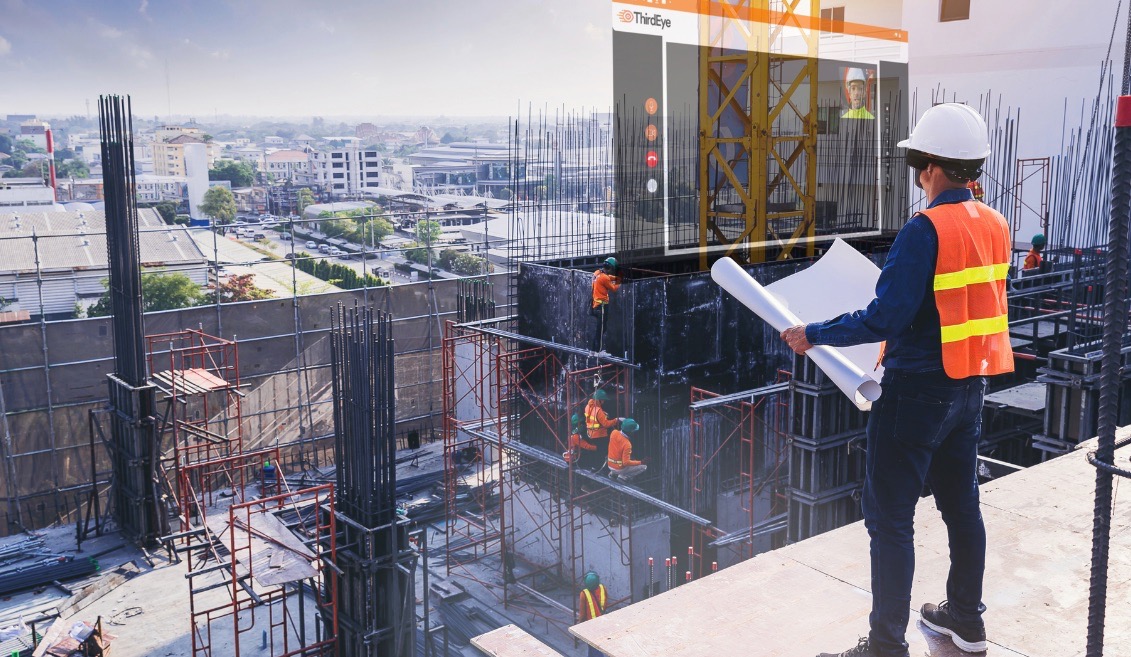It takes a particular kind of chutzpah go up against the behemoths, especially when it comes to AR glasses. We already have Microsoft’s Hololens and Google Glass is being marketed as an enterprise device. But ThirdEye thinks its up for the challenge.
ThirdEye is a spin-off of a project for the Department of Defense. Stealthily, it has been making steady in-roads into the AR smart glasses and the accompanying AI software space.
The ThirdEye glasses may look like safety goggles — and they are, to some degree — but they do much more. The company’s second-gen X2 MR lets people access documents or schematics hands-free while working on a project. Live digital information can be projected onto the user’s field of view; it can also relay live images to a tablet or phone, allowing colleagues to provide guidance or oversee an activity. There’s also a low-resolution thermal sensor built into the glasses. And they’re lightweight.
The company quickly found a customer in the military, which is making use of the tech for classified things. But, ThirdEye CEO Nick Cherukuri told TechCrunch that the glasses could be used for more mundane applications, as well, like helping technicians make repairs in remote settings.

A combat medic gets instructions via the ThirdEye glasses. Image Credits: ThirdEye
And that’s just the beginning. ThirdEye’s technology became especially important during the pandemic; the glasses allowed for clearer treatment options and diagnoses without too many people having to come into contact with each other. ThirdEye saw its opportunity and developed HIPAA-compliant telehealth AR software to go with it.
In August 2022, the U.K.’s National Health Service launched a trial where community nurses wore the goggles when making home visits. By transcribing a patient’s visit record directly to their notes (with their consent), the company says its glasses could reduce the amount of time nurses spent focusing on paperwork rather than with their patients.
The glasses could also help to reduce the need for doctors’ appointments or even hospital admissions by allowing health care professionals to share live footage with colleagues, giving patients an opportunity to get second opinions or more detailed diagnoses. The thermal imaging sensor can be used to assess wound healing, too.
“I would say our main B2B verticals right now are health care, telecom, manufacturing and e-commerce,” Cherukuri said. “We haven’t announced this yet, but we’re working on getting some investment partners.”
He said that its military tech helps give it credence and an early customer base. “We have multiple bases using it. They’re using it for remote maintenance and training purposes. So, for example, with our glasses you can have a 100-step process digitally come up on the glasses,” Cherukuri said. “You can be fixing machinery or looking at a complex piece of equipment and have the instructions overlaid live on top of that. I believe we’re the only AR glasses with a built-in thermal sensor that enables them to generate a heat map of any equipment the user looks at. This is all useful data that helps the users operate much more efficiently.”
The company knows that it is operating in a limited market for now. But Cherukuri thinks that the overall market is nascent and finding a new foothold. “We just started selling recently, and so far we’ve sold a couple of thousand units. It’s not like the phone market yet, where people are selling millions of these devices; it’s not yet as pervasive like that,” Cherukuri said. We’re really focused on the software component as well, and our software is cross-platform compatible, not just on the glasses, but also on tablets and phones.”
The software is Android-based, which means that customers can customize the devices and build their own apps.

In construction, AR can be used to overlay precise building metrics and schematics. Image Credits: ThirdEye
For the near future, the company is developing a smaller pair of glasses that has a wider field of view and higher brightness levels. It wants to add more sensors, such as plane detection and to be able to overlay a BIM model with a few millimeters of accuracy. ThirdEye is also testing its holographic display capabilities with 5G in order to reduce any lagging and create a more immersive experience.
“We put a lot of focus on the customer needs, in terms of what sensors we put in the glasses, how we develop the glasses,” Cherukuri said. “Unlike other AR glasses manufacturers, we made a conscious decision to avoid needing a wired pack. In B2B settings — and especially in military settings — that’s a safety concern.”
The AR headset supports voice commands in a slew of languages, along with gesture and motion control, letting customers develop solutions with flexibility.
“Implementing different, user-friendly user interfaces is still an obstacle in terms of how new this tech is. Many people are seeing AR for the first time, especially on the glasses side. Our goal is to reduce the time spent learning,” Cherukuri said. “Within a week, people are getting familiar with using the glasses and then they’re happy with them going forward.”
